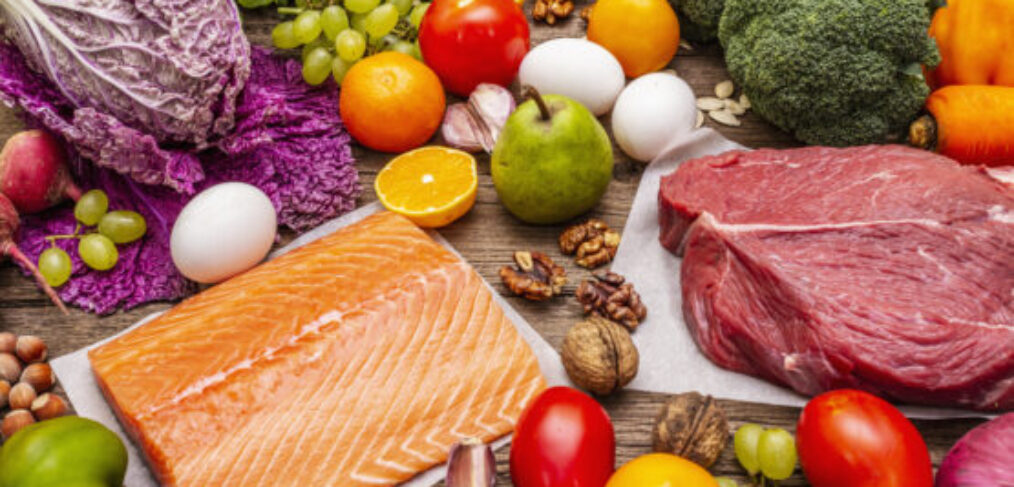Paleo, Keto or Carnivore: Eating FOOD is Far More Important Than Choosing a Label

When I think back to the early days of teaching my clients how to implement a Paleo Approach, I was, admittedly, quite dogmatic.
Maybe not as much compared to my two-year stint as a hard-core vegan ten years prior, but still, far from flexible to say the least.
When I think back to the early days of teaching my clients how to implement a Paleo Approach, I was, admittedly, quite dogmatic.
Maybe not as much compared to my two-year stint as a hard-core vegan ten years prior, but still, far from flexible to say the least.
And while I’ve continued to follow an authentic Paleo approach for nearly twenty years, I’ve learned that to not incorporate and at least consider other points of view when it comes to my work, something may be missed.
There was the client who felt strongly inclined to continue to follow a raw, vegan diet, even though she was suffering terribly from SIBO. Those who’ve experience SIBO are well aware that in order to properly treat it, a rather strict protocol is often the most successful, sometimes combined with an antibiotic such as erythromycin. To add another element of restriction – no animal protein, left this person with no protein sources unless she were to add legumes.
Or the woman who was referred to me by her functional medicine doctor for help with her eating regime; a long time pescatarian, she was been treated for off the chart levels of Mercury and advised to avoid fish for the foreseeable future. Unwilling to consider incorporating even small amounts of properly sourced proteins, she felt strongly that the only protein she would be willing to ingest would be protein powders.
The man, a cyclist, who initially reached out wanting to change his diet to address mysterious fatigue he was experiencing. He included in his intake paperwork some recent labs, all of which he had reviewed with his doctor, including his EBV number in the 800+ range ( Western Medicine (1) considers an optimal result to be between 0 – 18 U/mL; for functional medicine, the window is narrower), which his doctor advised was nothing to be concerned with. It turned out he was willing to make some changes to his diet, but unwilling to touch any of his ‘training’ nutrition which included sugar cereals marketed to children and gatorade and also unwilling to see a functional medicine doctor who would have been able to treat the EBV.
Point being: had I approached any of the three clients above with a dismissive ‘you’ve got to follow a strict paleo approach’., chances are, they’d have walked out the door.
This is not to say I no longer believe in Paleo, quite the opposite, I do! However, what I’ve learned along the way, in addition to the importance of meeting people where they are and in some cases, even starting with small steps, is that there’s one thing that supersedes following any specific diet label: knowing where your food is coming from and what exactly is in it.
You could chose Paleo, or Keto, or Pescatarian or even Vegan, but if the only standards being applied are the ‘rules’ of any of the many variations of any of the above (and more), the crucial thing that is not being considered is whether or not what is being consumed is actually food.
Food: material consisting essentially of protein, carbohydrate, and fat used in the body of an organism to sustain growth, repair, and vital processes and to furnish energy (2).
How much of what you eat is food?
Today, ultra-processed foods make up 73% of the US food supply, according to Northeastern University’s Network Science Institute (3).
Where has that gotten us?
Just a handful of some staggering statistics (including one for our furry friends, too):
More than 2 in 5 adults (42.4%) have obesity (4).
About 1 in 6 children and adolescents ages 2 to 19 (16.1%) are overweight. Almost 1 in 5 children and adolescents ages 2 to 19 (19.3%) have obesity. About 1 in 16 children and adolescents ages 2 to 19 (6.1%) have severe obesity (4).
An estimated 9.8% (almost 6 million) of U.S. children ages 3 to 17 years old have ever been diagnosed with ADHD, compared to 8.7% (over 5 million of U.S. children with a current ADHD diagnoses (5).
According to an article in the journal Pediatrics, about half a million children and adolescents in the United States each year receive prescriptions for SSRIs (6).
In North America, obesity is the most common preventable disease in dogs. The Association for Pet Obesity Prevention reports that more than 50% of dogs are overweight (7)
If you’re scratching your head wondering what on earth is going on here and how can we even begin to address such grandiose issues… good! Having a clear and honest understanding of just how dire the situation truly is, is the crucial first step.
There are several ways to begin – and while looking at the big picture can surely seem insurmountable, here’s the good news: not everyone has to address it in this manner.
Some will ,and some can make just as much of an impact by doing their individual parts, however small they may seem.
EDUCATION – non-negotiable. Find your reliable resources to stay in the know and as you learn, share with your family, your friends and your community. Podcasts are a great resource; of course, there are millions these days but choose a few and stick to them. My own personal favorites include:
The Doctor’s Farmacy : https://drhyman.com/blog/category/podcasts/
Art of Being Well : https://drwillcole.com/podcast
The Resetter Podcast https://drmindypelz.com/resetter-podcast/
BACK TO BASICS
It may seem like a stretch, and often this suggestions is quickly countered with ‘I don’t have time’ – but consider doing some of your own food growing and cooking. Take the time to go to the farmer’s market each week, or investigate joining a CSA. Most importantly, think about how odd it is that for many, procuring food and preparing it for ourselves and family has somehow ended up on the list with cleaning the toilet and mopping, the latter of which could certainly be delegated out to someone else to do (- no housekeeper? Give the kids a job! I did it! I won;’t say it was fun but our bathrooms and floors were sparkling clean!). But grouping everything surrounding the entire dining experience as an inconvenience is simply something that needs to be flipped upside down, no matter how busy we might be. We all need to eat. Busy parents who take the time and show kids that this is the priority, not an afterthought, are making further reaching change than can be measured.
COMMON SENSE
When it comes to choosing any particular diet, don’t forget to put on your thinking hat, as my mom used to say. What are the promises of the approach and does it make common sense? And can you do it for a long time, or is it severe, restrictive, fear-based and unsustainable? Does it include overlooking nutrition and going for supplements instead? Or worse, prescription medication? Ozempic drug prescriptions hit 9 million, a surge of 300% in under three years. U.S. health care providers wrote more than nine million prescriptions for Ozempic (8), despite high risk side and sometimes irreversible side effects, including gastroparesis and bowel obstruction (9).
A few months ago, Will Cole said on an interview with Mindy Pelz:
“The problem is when people when you have this toxic tribalism which I don’t know what the heck, we’re having toxic tribalism and wellness, like we’re talking about health and wellness and food, like leave it to the politicians, I think the strange politic political stuff, we shouldn’t be like coming together and saying like, okay, that works for you. That doesn’t work. For me. That’s the bio individuality. That’s the heart of functional medicine. Let’s be okay with differences. Yeah, and be okay, with a lot more in common than we have a difference. Because we all agree that factory farming isn’t good. We all agree that processed refined stuff isn’t good. So let’s just focus on that. And then the details of the types of macros we focus on, or the types of foods that we eat. It should not create such a toxic tribalism.” (10)
Such a great point.
Those who make the effort to choose ANY diet are at the very least trying.
Let’s rise above putting forth negativity in the diet space and instead, join together to educate, empower and HEAL!
(1) https://www.webmd.com/a-to-z-guides/what-to-know-epstein-barr-virus-test
(2) https://www.merriam-webster.com/dictionary/food
(3) https://www.theguardian.com/environment/2023/jun/23/processed-foods-american-addiction
(4) https://www.niddk.nih.gov/health-information/health-statistics/overweight-obesity
(5) https://www.addrc.org/2023-adhd-statistics-at-a-glance/
(6) https://www.webmd.com/depression/features/kids-antidepressants-growing-problem
(7) https://vcahospitals.com/know-your-pet/obesity-in-dogs
(8) https://www.cnbc.com/2023/09/27/ozempic-wegovy-drug-prescriptions-hit-9-million.html
(9) https://www.cnn.com/2023/07/25/health/weight-loss-diabetes-drugs-gastroparesis/index.html
(10) https://drmindypelz.com/the-art-of-intuitive-fasting-with-dr-will-cole/





